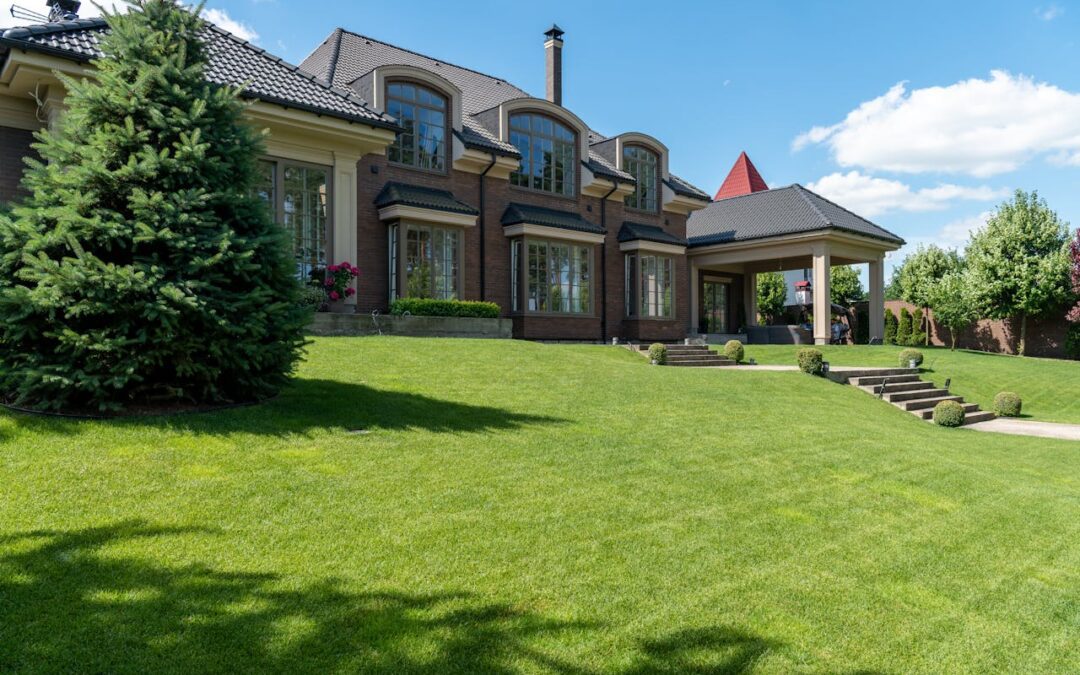Designing outdoor stairs requires careful planning to ensure they are both safe and stylish. Outdoor stairs are a key part of your home’s exterior and need to withstand the elements while providing a secure path. In White Rock, where the weather can be unpredictable, it is especially important to build stairs that are durable and safe.
Safety is the primary concern when designing outdoor stairs. Proper measurements, materials, and installation techniques are crucial to prevent accidents. You must consider factors like tread depth, riser height, and handrail placement to ensure the stairs are easy to use for everyone, including children and seniors. Focusing on these details helps create a stable and user-friendly outdoor space.
At the same time, aesthetics play a significant role in enhancing your home’s curb appeal. Choosing the right materials and design can make your stairs a standout feature. Whether you prefer a rustic look with natural wood or a modern vibe with sleek metal, the design options are endless. Well-designed stairs not only add functionality but also contribute to the overall beauty of your home.
By combining safety features with stylish design elements, you can create outdoor stairs that serve both practical needs and add visual interest to your property. Understanding the key considerations, selecting durable materials, and implementing smart design ideas will help you achieve the perfect balance of safety and style for your outdoor stairs.
Key Considerations for Safe Outdoor Stairs
Safety is essential when designing outdoor stairs. Here are the key factors to consider:
1. Proper Measurements: Ensure that the tread depth and riser height are consistent throughout the stairs. The tread should be at least 10 inches deep to provide enough space for a comfortable step. The riser height should be between 6 and 7.5 inches to make the steps easy to climb. Inconsistent measurements can cause trips and falls.
2. Handrails and Guardrails: Install sturdy handrails on both sides of the stairs. Handrails should be between 34 and 38 inches high. For added safety, especially on higher stairs, install guardrails. These should be at least 36 inches tall to prevent falls. Handrails and guardrails provide support and stability for users.
3. Non-Slip Surfaces: Use non-slip materials or add non-slip strips to the stair treads to prevent slipping. This is particularly important in White Rock, where rain and snow can make surfaces slippery. Non-slip surfaces enhance safety by reducing the risk of falls.
4. Adequate Lighting: Proper lighting is crucial for visibility. Install lights along the stairs and pathways to illuminate each step. Solar-powered lights are a good option for energy efficiency. Good lighting ensures that the stairs are safe to use even at night.
5. Building Codes and Permits: Check local building codes and obtain necessary permits before starting your project. Compliance with regulations ensures that your stairs meet safety standards. Building codes cover aspects like tread depth, riser height, and railings.
Choosing Materials for Outdoor Stairs
Selecting the right materials is vital for the durability and appearance of your outdoor stairs. Here are some material options to consider:
1. Wood: Wood is a popular choice due to its natural look and versatility. Cedar and treated pine are excellent options. Cedar is resistant to rot and insects, making it durable. Treated pine is also long-lasting and more affordable. Ensure the wood is sealed and stained to protect it from the elements.
2. Composite: Composite materials, like Trex, combine wood fibres and plastic. They are resistant to rot, mould, and insects. Composite stairs require less maintenance than wood and come in a variety of colours and textures. They are a good choice for a modern look and long-term durability.
3. Metal: Metal stairs, such as those made from aluminium or steel, offer a sleek and modern look. Aluminium is lightweight and rust-resistant, making it ideal for coastal areas like White Rock. Steel is strong and durable, suitable for high-traffic areas. Ensure metal stairs have a non-slip coating.
4. Stone: Natural stone stairs provide a classic and elegant appearance. Stones like granite and slate are durable and weather-resistant. However, stone can be expensive and may require professional installation. Stone stairs are suitable for a luxurious outdoor space.
5. Concrete: Concrete stairs are durable and can be customised with various finishes and colours. They are a cost-effective option for long-lasting outdoor stairs. Concrete can be stamped to resemble stone or other materials, offering aesthetic versatility.
Each material has its own advantages and considerations. Choose the material that best fits your needs, budget, and design preferences.
Stylish Design Ideas for Outdoor Stairs
Creating outdoor stairs that are both functional and stylish adds value and appeal to your White Rock home. Here are some design ideas to inspire your project:
1. Integrate Lighting: Adding lighting to your stairs not only improves safety but also enhances the look. Consider LED strip lights under the treads or solar-powered lights along the sides. This creates a warm and inviting glow at night.
2. Mix Materials: Combining different materials can create a unique and aesthetically pleasing design. For example, use stone treads with wooden risers or metal railings with wooden steps. These combinations add texture and visual interest.
3. Planters and Greenery: Incorporate planters or built-in flower beds along the sides of your stairs. This brings nature into your design, adding colour and life. Choose plants that thrive in the White Rock climate for year-round beauty.
4. Floating Stairs: For a modern look, consider floating stairs. This design features steps that appear to “float” without visible support. Use metal or wood for a sleek finish. Floating stairs give a contemporary edge to your outdoor space.
5. Paint and Stain: Use paint or stain to add colour to your stairs. Choose earthy tones to blend with natural surroundings or bold colours for a striking effect. Regular staining or painting also helps protect the wood from the elements.
6. Decorative Railings: Customize your railings with decorative elements like wrought iron designs or glass panels. Decorative railings can make your stairs a standout feature while ensuring safety.
By incorporating these stylish elements, you can design outdoor stairs that are both eye-catching and practical.
Installation Tips and Best Practices
Proper installation is key to ensuring your outdoor stairs are safe and long-lasting. Follow these tips to achieve the best results:
1. Prepare the Site: Begin by clearing and levelling the area where your stairs will go. Remove any vegetation, rocks, or debris. A stable foundation is essential for the durability of your stairs.
2. Use Quality Materials: Invest in high-quality materials that are suitable for outdoor use. Treat wood to resist rot and choose weather-resistant metals or composites. Quality materials ensure longevity and reduce maintenance needs.
3. Follow Measurements: Stick to standard measurements for tread depth and riser height. Consistency in these measurements prevents tripping hazards. Use a level to ensure each step is even and secure.
4. Secure Fastenings: Use proper fastenings like galvanized screws and bolts to hold the structure together. Avoid nails as they can become loose over time. Secure fastenings provide stability and reduce the risk of accidents.
5. Install Handrails: Ensure handrails are installed securely and at the correct height. Test the handrails to make sure they can support weight and provide an easy grip. Handrails are essential for safety, especially on longer staircases.
6. Check for Permits: Before starting, check if you need permits for your project. Following local codes and regulations ensures your stairs meet safety standards and avoids legal issues.
7. Inspect and Maintain: Once installed, conduct regular inspections. Look for signs of wear, loose railings, or damage. Addressing issues promptly ensures your stairs remain safe and functional.
By following these best practices, you can construct outdoor stairs that are sturdy, safe, and beautiful.
Conclusion
Designing and installing outdoor stairs requires a balance of safety and style. In White Rock, where weather conditions can be challenging, it is crucial to choose durable materials and follow strict safety standards. Key considerations like proper measurements, secure handrails, and non-slip surfaces ensure your stairs are safe for daily use. Meanwhile, stylish design ideas like integrated lighting, mixed materials, and decorative railings can enhance the visual appeal of your outdoor space.
Using high-quality materials and adhering to best installation practices will result in a set of stairs that not only look good but also stand the test of time. Regular maintenance and inspections help maintain safety and appearance, giving you peace of mind and lasting satisfaction.
If you’re ready to transform your outdoor space with safe and stylish stairs, All Hands on Deck is here to help. Contact us today to get started on creating the perfect wood outdoor railings and stairs for your White Rock home!



Recent Comments